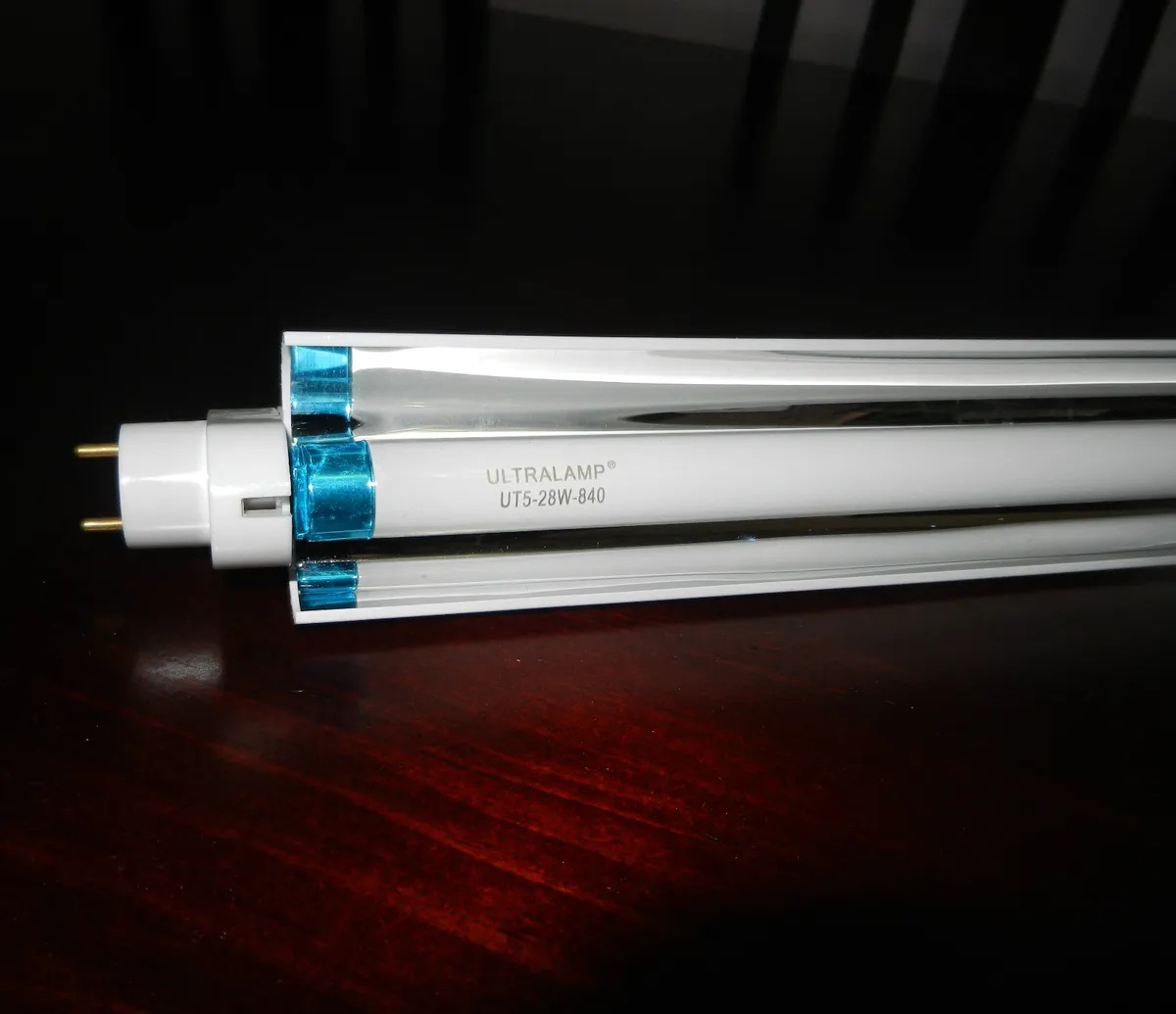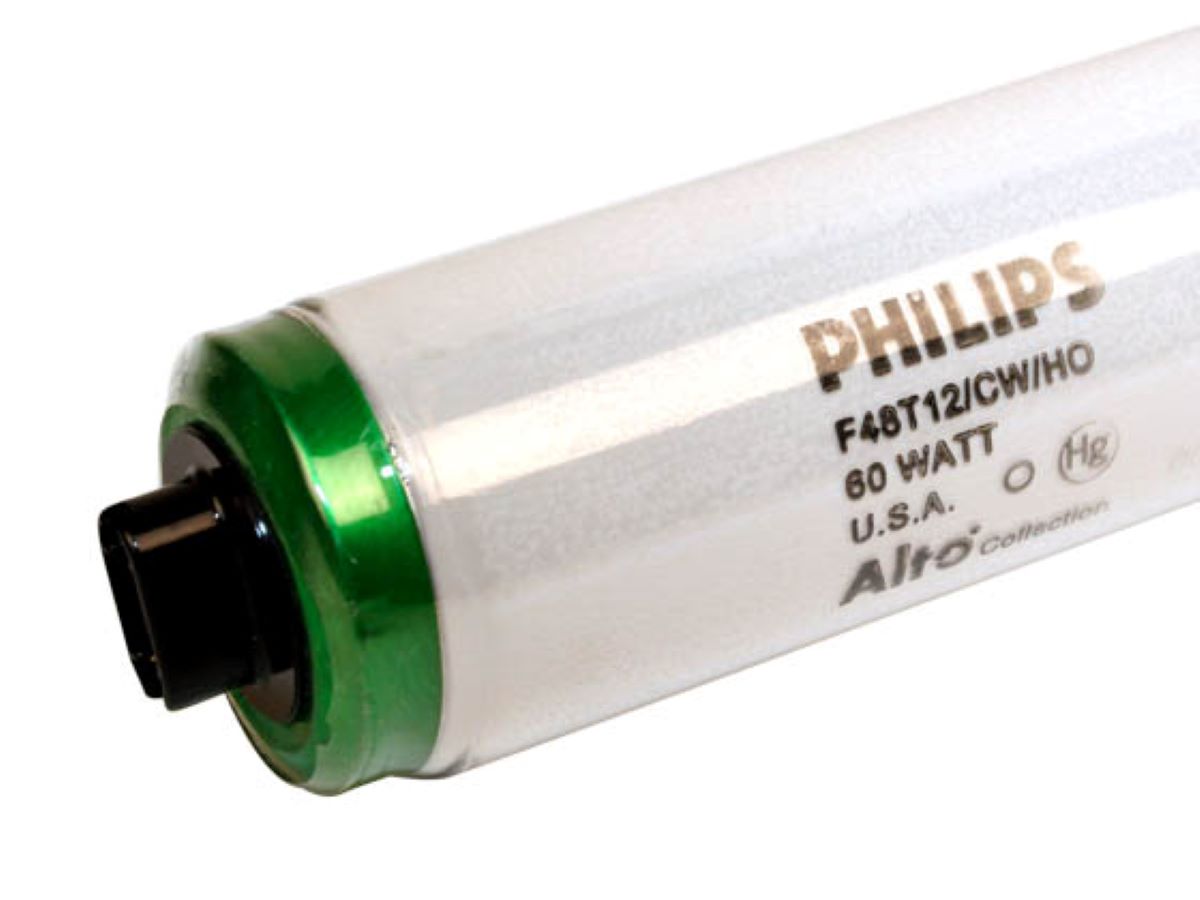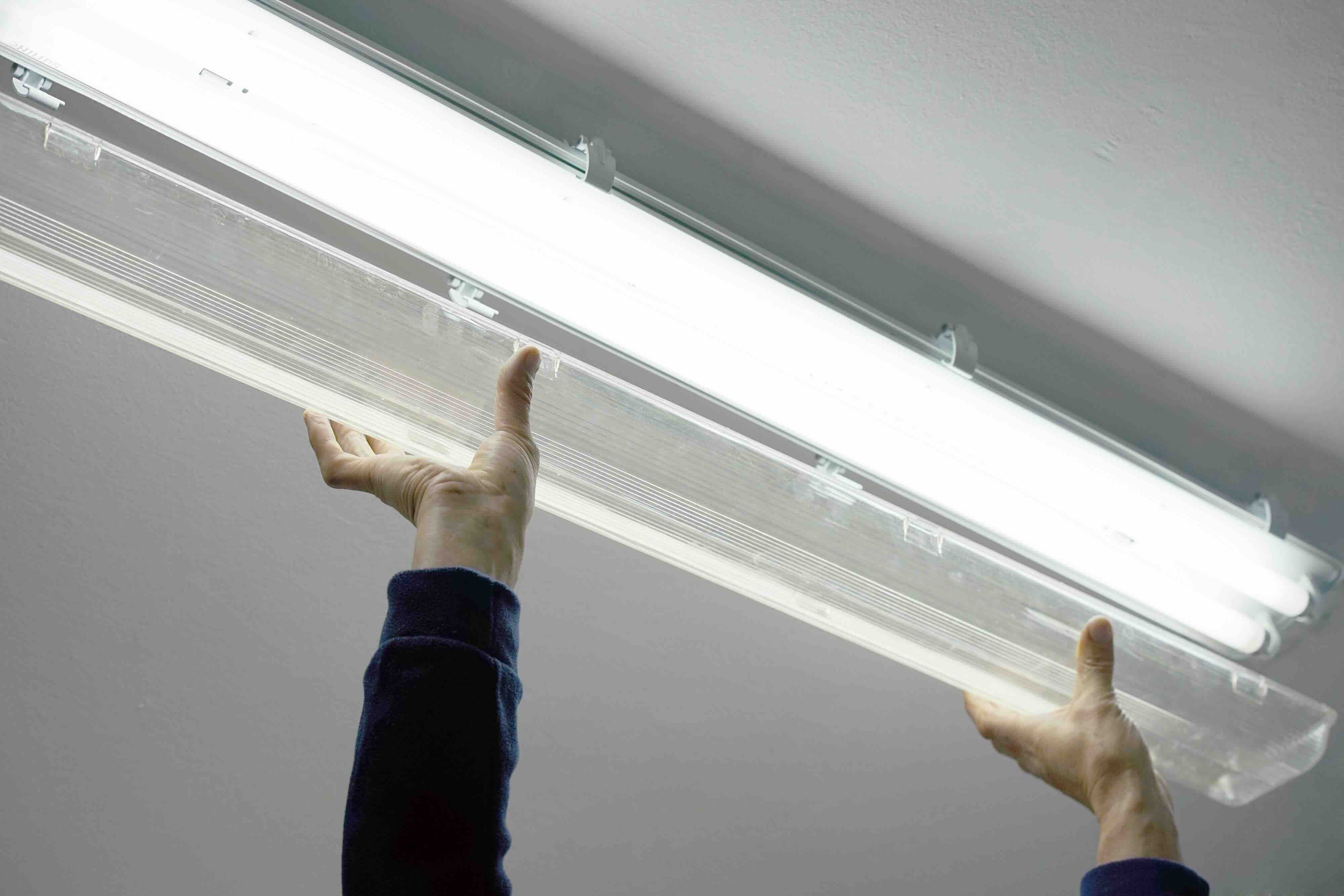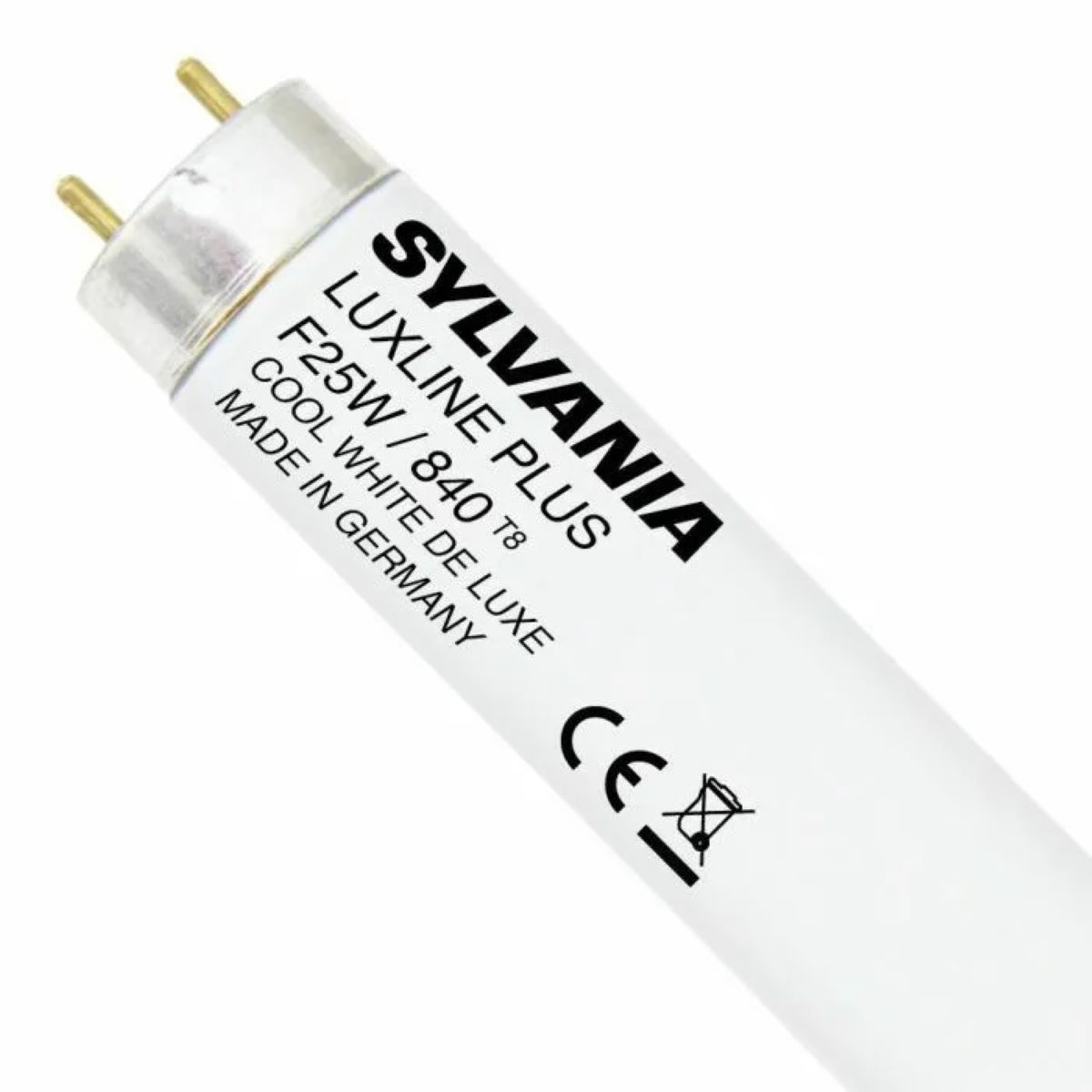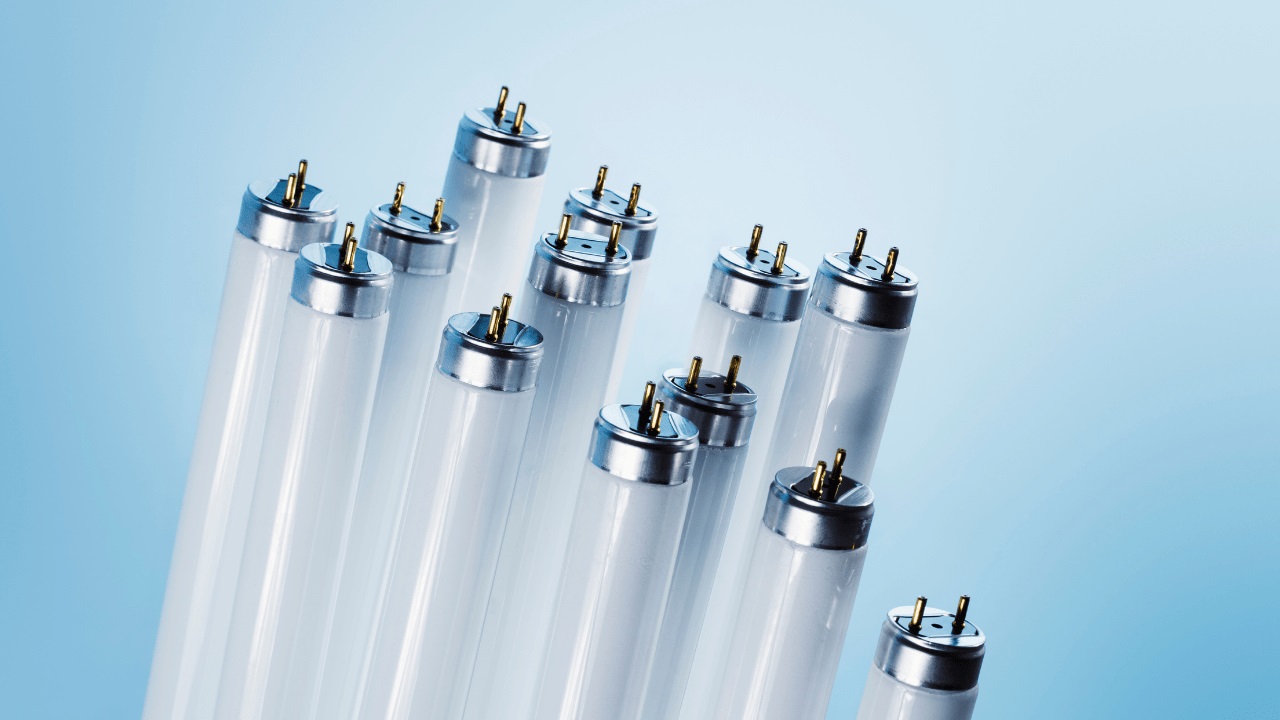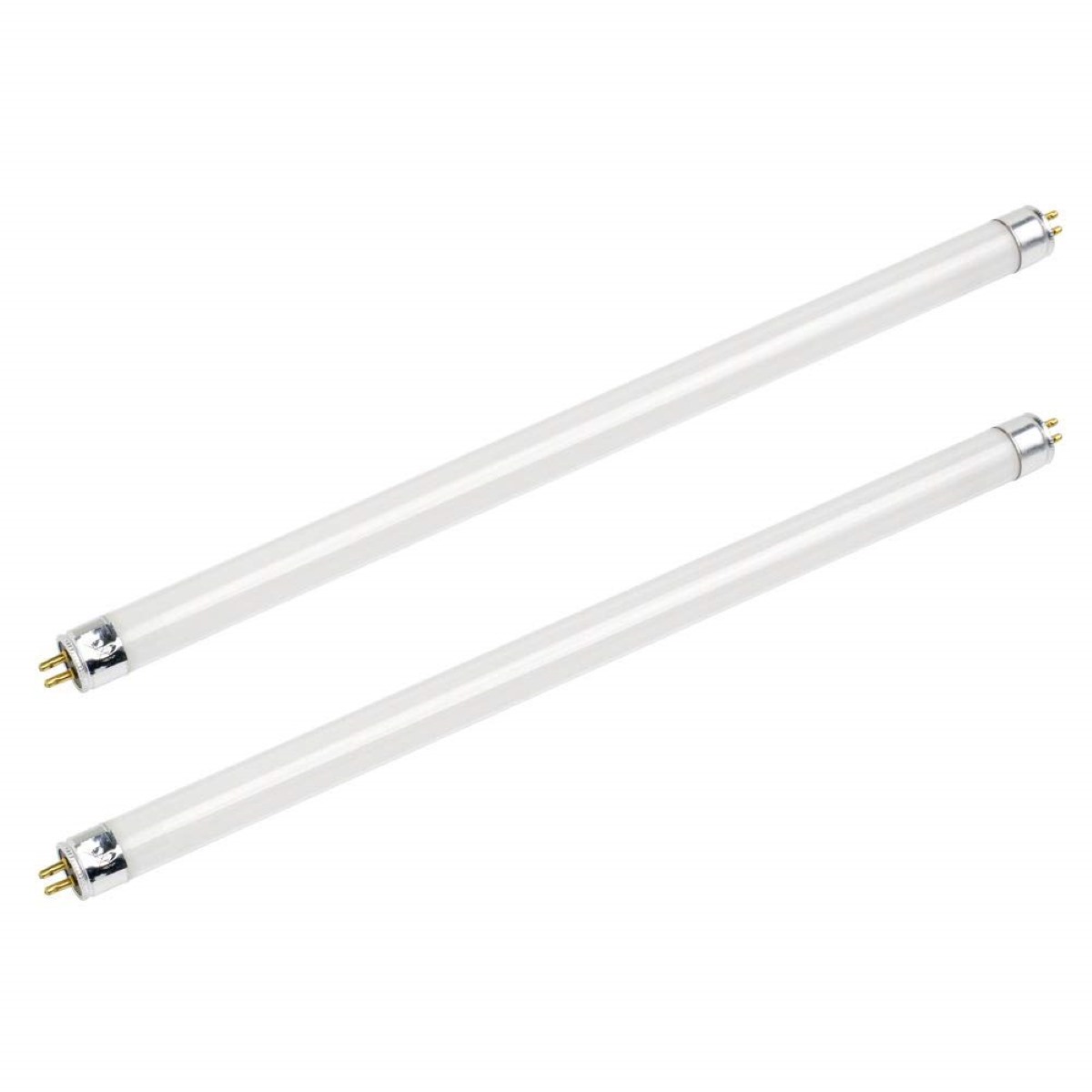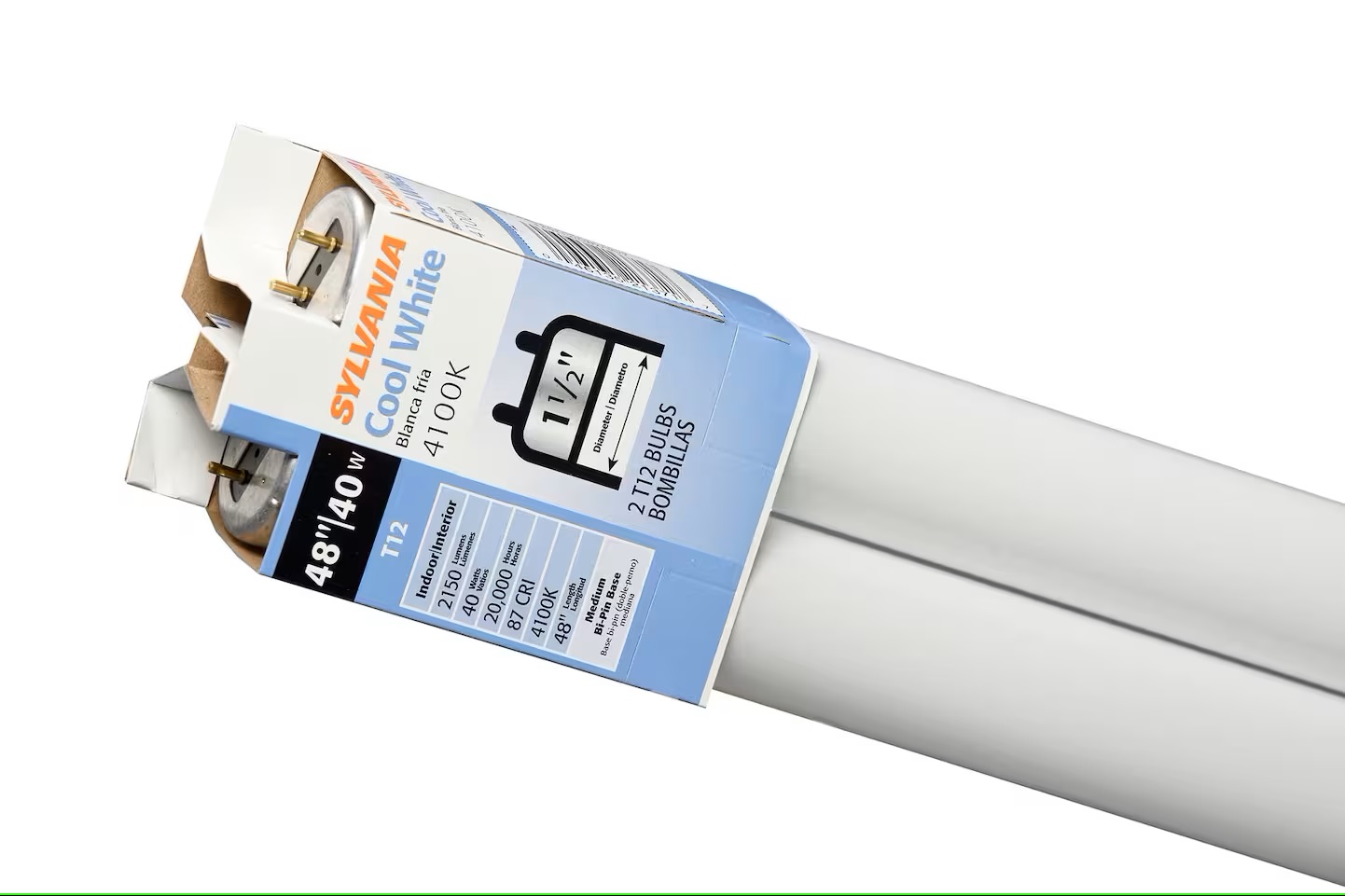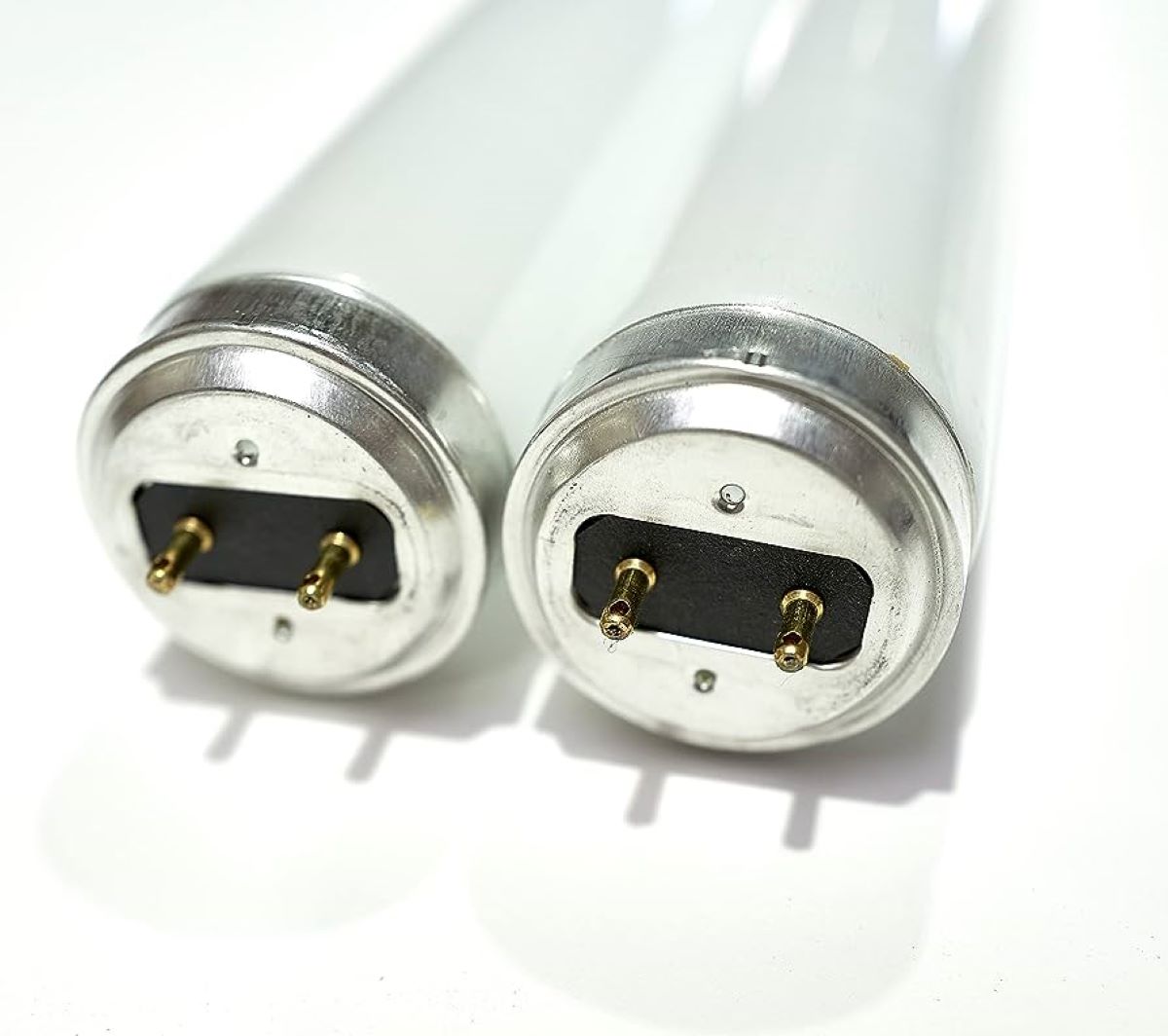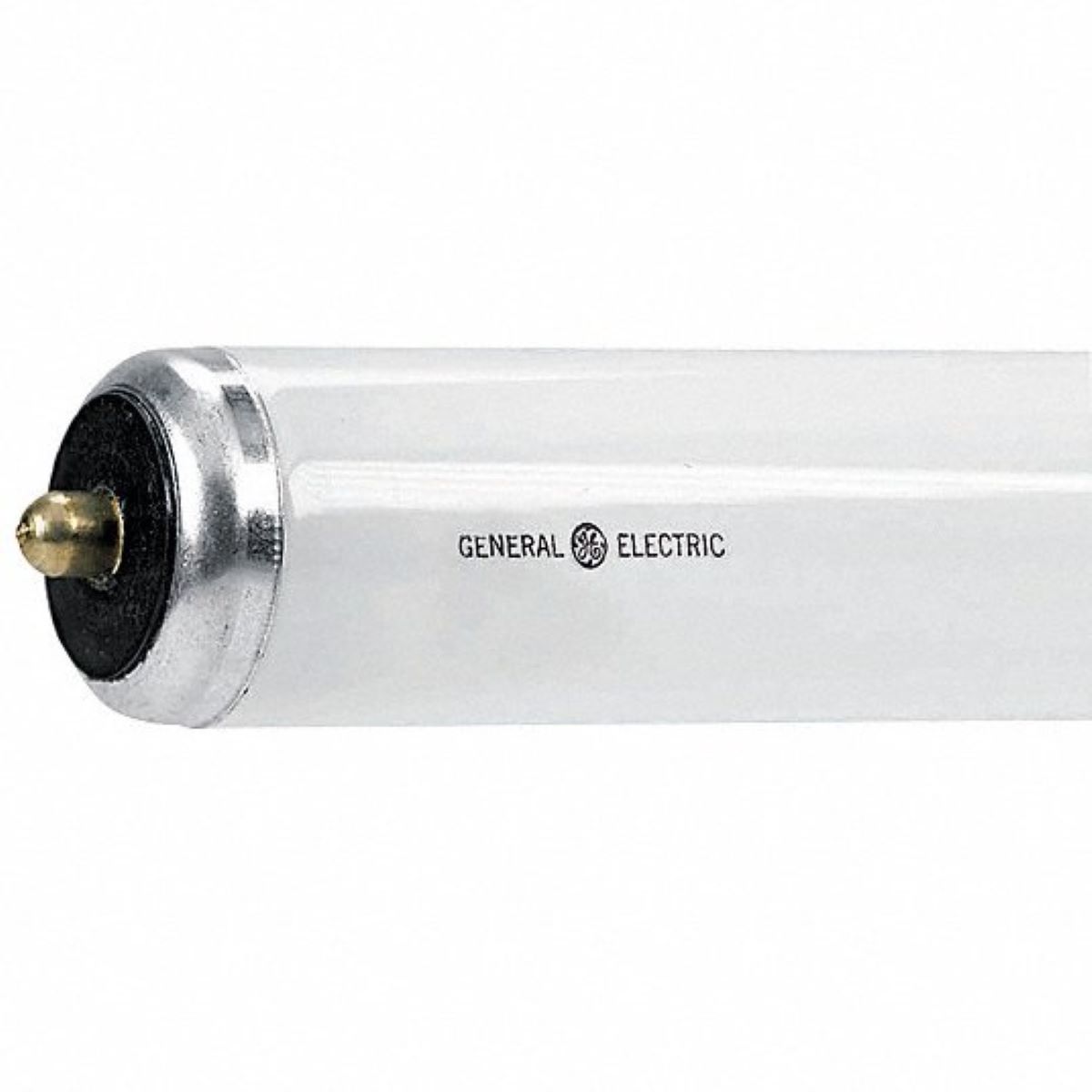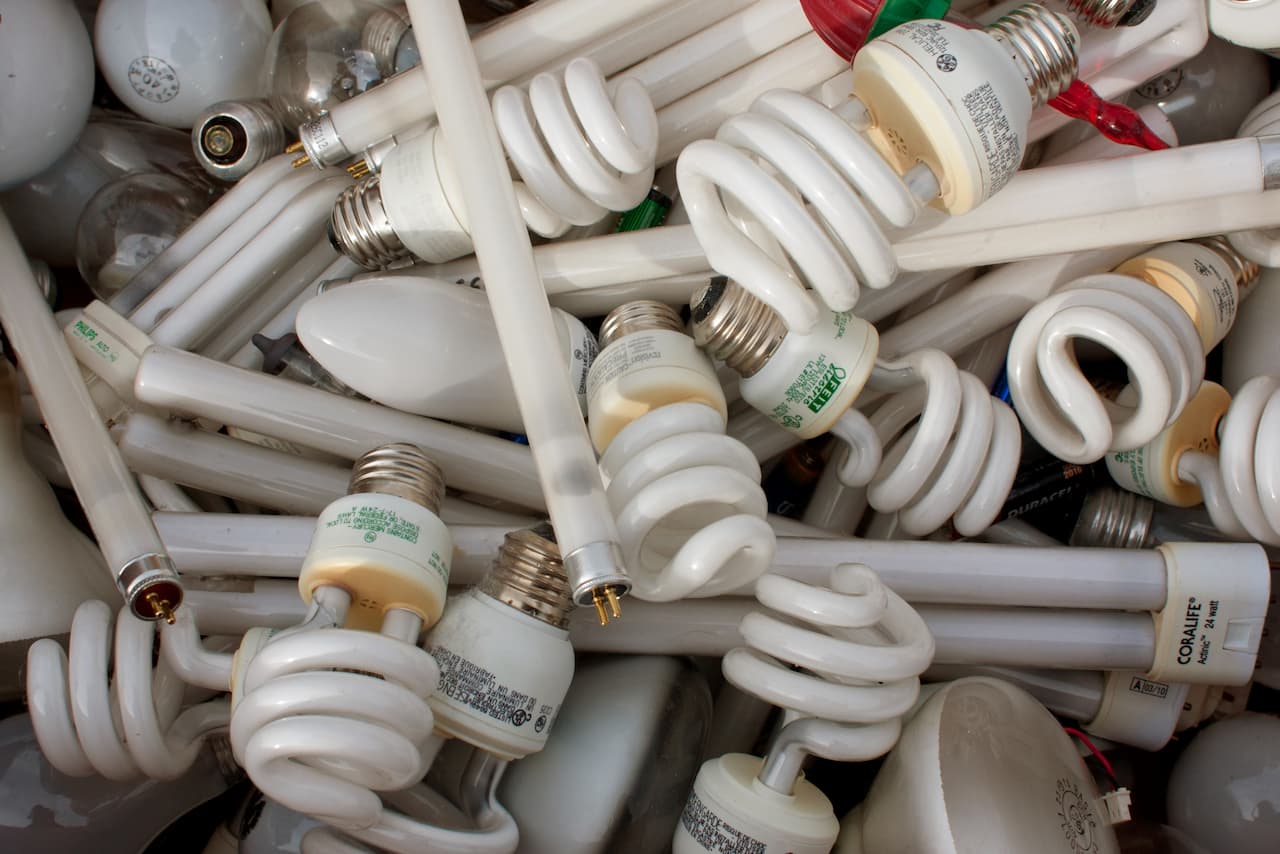Home>Furniture>What Is The Diameter Of A T-12 Fluorescent Lamp?
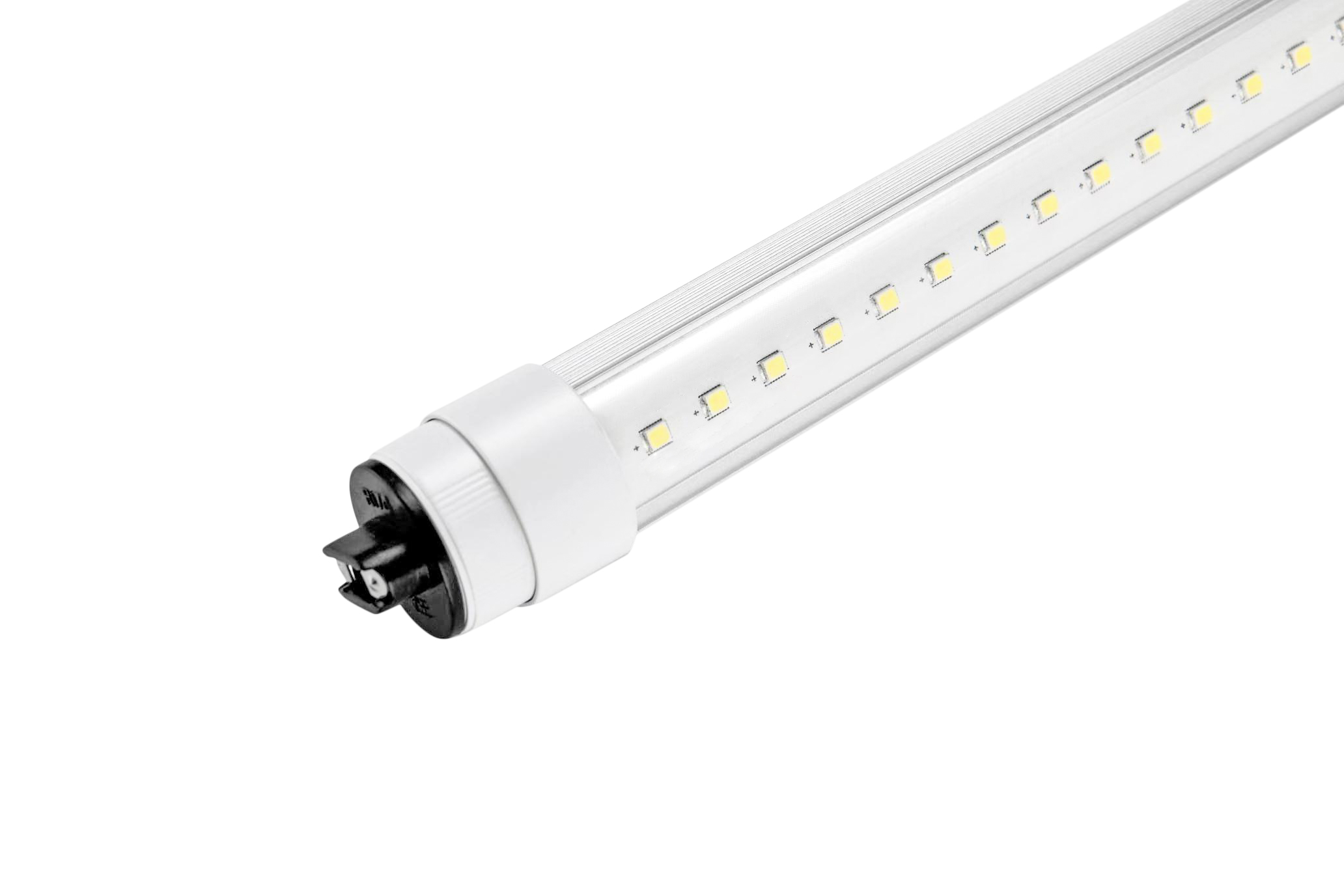

Furniture
What Is The Diameter Of A T-12 Fluorescent Lamp?
Modified: December 7, 2023
Find out the diameter of a T-12 fluorescent lamp and explore our extensive range of furniture options for your space.
(Many of the links in this article redirect to a specific reviewed product. Your purchase of these products through affiliate links helps to generate commission for Storables.com, at no extra cost. Learn more)
Introduction
When it comes to lighting up our spaces, fluorescent lamps have been a popular choice for their energy efficiency and bright illumination. Among the various types of fluorescent lamps available in the market, the T-12 fluorescent lamp is one of the most commonly used options. However, many people often find themselves wondering about the diameter of a T-12 fluorescent lamp.
In this article, we will provide a comprehensive overview of T-12 fluorescent lamps, including an understanding of their diameter. We will explore the standard diameter of a T-12 lamp, the importance of knowing its diameter, and the factors that can affect its size. By the end, you will have a clear understanding of T-12 fluorescent lamp diameter and its significance in choosing the right lighting solution for your needs.
Key Takeaways:
- T-12 fluorescent lamps have a standard diameter of 1.5 inches, ensuring bright and uniform illumination. Understanding the diameter is crucial for compatibility, safety, and efficient lighting solutions.
- Variations in T-12 lamp diameter may occur due to manufacturing processes and wear, but overall, knowing the diameter is essential for proper fitment and functional lighting setups.
Read more: What Is T12 Fluorescent Tubes
Overview of T-12 Fluorescent Lamps
T-12 fluorescent lamps are a type of linear fluorescent lamps that have been widely used for many years. They are named T-12 because of their tubular shape and a diameter of 1.5 inches, which is approximately 12/8 of an inch. The “T” in the name stands for “tubular,” while the number represents the diameter in eighths of an inch.
These lamps are known for their energy efficiency and long lifespan, making them suitable for both commercial and residential use. They are commonly found in workplaces, schools, hospitals, and retail spaces, providing bright and uniform illumination for various applications.
One of the key advantages of T-12 fluorescent lamps is their ability to emit a large amount of light, thanks to their larger diameter compared to other fluorescent lamp types. This wider diameter allows for a greater surface area for the phosphor coating inside the lamp, resulting in a brighter and more evenly distributed light output.
In addition to their brightness, T-12 fluorescent lamps are known for their excellent color rendering properties. They provide a high color rendering index (CRI), which is a measure of how accurately a light source can reproduce the true colors of an object. This makes T-12 lamps ideal for environments where color accuracy is essential, such as art studios, showrooms, and retail displays.
Over the years, T-12 fluorescent lamps have faced some competition from more energy-efficient alternatives, such as T-8 and T-5 lamps. These newer lamp types have smaller diameters and offer better energy efficiency. However, T-12 lamps are still widely used in many applications, primarily due to their affordability and availability.
Now that we have covered the overview of T-12 fluorescent lamps, let us delve into the specifics of understanding their diameter.
Understanding Lamp Diameter
When it comes to fluorescent lamps, understanding the diameter is crucial in determining their compatibility and fitting into appropriate fixtures. The diameter of a lamp refers to the measurement of its width, usually expressed in inches or millimeters.
In the case of T-12 fluorescent lamps, the diameter is standardized at 1.5 inches or approximately 38 mm. This measurement is important because it determines the type of lamp holder or socket required to accommodate the lamp. It also helps in selecting the appropriate fixture for installation.
The diameter of the lamp is directly related to the size of the lamp holder. Different lamp holders are designed to accommodate specific lamp diameters. For example, a T-12 lamp with a diameter of 1.5 inches will require a lamp holder specifically designed for T-12 lamps. Attempting to use a different diameter lamp in the wrong holder can result in improper installation and potential safety hazards.
Additionally, understanding the lamp diameter is essential for selecting the right fixture. Fixtures are designed to house specific lamp sizes, ensuring a secure and stable installation. Using a lamp with the wrong diameter or installing it in an incompatible fixture can lead to an unstable and unsafe lighting setup.
It’s worth noting that the diameter of a lamp also affects its overall design and construction. A larger diameter allows for more space inside the lamp, which can impact factors such as light output, efficiency, and color rendering. The larger diameter of T-12 fluorescent lamps contributes to their ability to emit bright and uniform illumination.
Now that we have a basic understanding of lamp diameter and its importance, let’s explore the standard diameter of T-12 fluorescent lamps in more detail.
Standard Diameter of T-12 Fluorescent Lamps
The standard diameter of T-12 fluorescent lamps is 1.5 inches or approximately 38 millimeters. As mentioned earlier, the “T” in the name represents “tubular,” and the number indicates the diameter of the lamp in eighths of an inch.
Unlike other fluorescent lamp types, the T-12 lamps have a larger diameter, allowing for greater brightness and light output. The larger diameter also provides more space for the phosphor coating inside the lamp, leading to improved color rendering properties.
It’s important to note that T-12 lamps come in varying lengths, but the diameter remains consistent across different wattages and lengths. Whether you have a T-12 lamp that is 4 feet long or 8 feet long, the diameter will always be 1.5 inches.
This standard diameter makes T-12 lamps compatible with specific lamp holders and fixtures that are designed to accommodate their size. It ensures a secure and stable installation, preventing any potential safety hazards.
While the T-12 lamps have been widely used in the past, their popularity has gradually declined in recent years due to the development of more energy-efficient alternatives, such as T-8 and T-5 lamps. These newer lamp types have smaller diameters and offer better energy efficiency, making them attractive options for those seeking more environmentally friendly lighting solutions.
Despite the declining popularity, T-12 lamps are still readily available in the market and continue to be used in various applications. Their affordable price and widespread availability make them a suitable choice for those with specific lighting requirements and budget constraints.
Now that we have explored the standard diameter of T-12 fluorescent lamps, let’s delve into the importance of knowing this diameter.
The diameter of a T-12 fluorescent lamp is 1.5 inches (38mm). When replacing a T-12 lamp, be sure to measure the diameter to ensure compatibility with the existing fixture.
Importance of Knowing the Lamp Diameter
Knowing the diameter of a T-12 fluorescent lamp is essential for several reasons. Understanding the lamp’s diameter helps in selecting the right lamp holder and fixture, ensuring a proper and safe installation. Here are some specific reasons why knowing the lamp diameter is important:
1. Compatibility: The diameter of a T-12 lamp determines the type of lamp holder or socket needed for installation. Using a lamp with the wrong diameter can result in improper fitment and potentially dangerous electrical connections. By knowing the lamp diameter, you can ensure compatibility between the lamp and the holder.
2. Fixture Selection: The diameter of the lamp also affects the choice of fixture. Fixtures are designed with specific lamp sizes in mind to ensure a secure and stable installation. Installing a T-12 lamp in a fixture intended for a different lamp diameter can lead to an unstable lighting setup, increasing the risk of accidents or damage.
3. Replacement Considerations: At times, you may need to replace a T-12 fluorescent lamp in an existing fixture. By knowing the lamp diameter, you can easily determine the appropriate replacement lamp, ensuring a seamless fit and functional compatibility.
4. Efficiency and Performance: The diameter of a lamp directly influences its design and construction. T-12 fluorescent lamps, with their larger diameter, offer greater surface area for the phosphor coating, resulting in improved light output and color rendering. Knowing the lamp diameter allows you to choose lighting solutions that meet your brightness and color accuracy requirements.
5. Safety: Using a lamp with the incorrect diameter can pose safety hazards. The wrong fitment can lead to loose connections, potential electrical short circuits, or even physical damage to the lamp and fixture. Knowing the lamp diameter ensures a proper and secure installation, minimizing the risk of accidents or electrical issues.
By understanding the importance of knowing the lamp diameter, you can make informed decisions when it comes to selecting and installing T-12 fluorescent lamps, ensuring both functionality and safety in your lighting setup.
Now, let’s explore some factors that can affect the diameter of T-12 lamps.
Read also: 8 Best Fluorescent Tubes T12 for 2025
Factors Affecting T-12 Lamp Diameter
While the standard diameter of T-12 fluorescent lamps is 1.5 inches, there are a few factors that can affect the actual diameter of these lamps. Understanding these factors can provide insights into the variations you may encounter in the market. Here are some factors that can influence the T-12 lamp diameter:
1. Manufacturing Variations: The manufacturing process of T-12 lamps can result in slight variations in diameter. Factors such as temperature variations, material shrinkage, and production tolerances can all contribute to small differences in the final diameter of the lamps. However, these variations are typically minimal and generally fall within an acceptable range.
2. Lamp Age and Wear: Over time, T-12 lamps may experience some wear and tear, which can affect their diameter. The ends of the lamp can become slightly worn or flattened, leading to a small reduction in diameter. This can impact the lamp’s fitment in the lamp holder, potentially requiring replacement for proper installation and performance.
3. Manufacturing Standards: Different manufacturers might have slight variations in their manufacturing standards for T-12 lamps. While the diameter is generally standardized at 1.5 inches, there may be subtle differences that could impact compatibility with specific lamp holders or fixtures. It’s important to refer to the manufacturer’s specifications and guidelines to ensure proper fitment.
4. External Conditions: Environmental factors can also have an influence on the diameter of T-12 lamps. Extreme temperatures or exposure to moisture can cause the lamp’s components to expand or contract, leading to slight variations in diameter. It’s recommended to store and install these lamps in controlled environments to minimize any potential impact on their dimensions.
5. Lamp Design and Construction: The specific design and construction of T-12 lamps can also affect their diameter. Some manufacturers may make subtle adjustments to enhance performance or improve efficiency, which can result in slight variations in the lamp’s dimensions. These adjustments are generally within acceptable limits and should not affect compatibility with standard fixtures and lamp holders.
It’s important to note that despite these potential factors, the overall diameter of T-12 fluorescent lamps remains relatively consistent and close to the standard measurement. As long as you ensure compatibility with appropriate lamp holders and fixtures, these variations should not pose significant challenges in practical applications.
Now, let’s summarize the key points we have discussed in this article.
Conclusion
T-12 fluorescent lamps are widely used for their energy efficiency, bright illumination, and affordability. Understanding the diameter of these lamps is essential for ensuring proper fitment, selecting compatible lamp holders and fixtures, and maintaining a safe and functional lighting setup.
The standard diameter for T-12 fluorescent lamps is 1.5 inches, allowing for a larger surface area for the phosphor coating and providing bright and uniform illumination. While variations in diameter may occur due to manufacturing processes, wear and tear, and external conditions, these variations are typically minimal and fall within acceptable limits.
By knowing the lamp diameter, you can select the appropriate lamp holder and fixture, ensuring a secure and stable installation. It also helps in replacing lamps when needed and choosing lighting solutions that meet your brightness and color rendering requirements.
Lastly, understanding the factors that can affect T-12 lamp diameter, such as manufacturing variations and environmental conditions, can provide insights into the variations you may encounter in the market. By considering these factors, you can make informed decisions and ensure compatibility and functionality in your lighting setup.
Overall, knowing the diameter of T-12 fluorescent lamps is crucial for an efficient and safe lighting installation. Whether you’re illuminating your workspace, classroom, or retail space, being aware of the lamp diameter empowers you to make the right choices and create a well-lit environment.
We hope this article has provided you with a comprehensive understanding of T-12 lamp diameter and its importance. Now, armed with this knowledge, you can confidently navigate the world of fluorescent lamps and make informed decisions for your lighting needs.
Frequently Asked Questions about What Is The Diameter Of A T-12 Fluorescent Lamp?
Was this page helpful?
At Storables.com, we guarantee accurate and reliable information. Our content, validated by Expert Board Contributors, is crafted following stringent Editorial Policies. We're committed to providing you with well-researched, expert-backed insights for all your informational needs.
